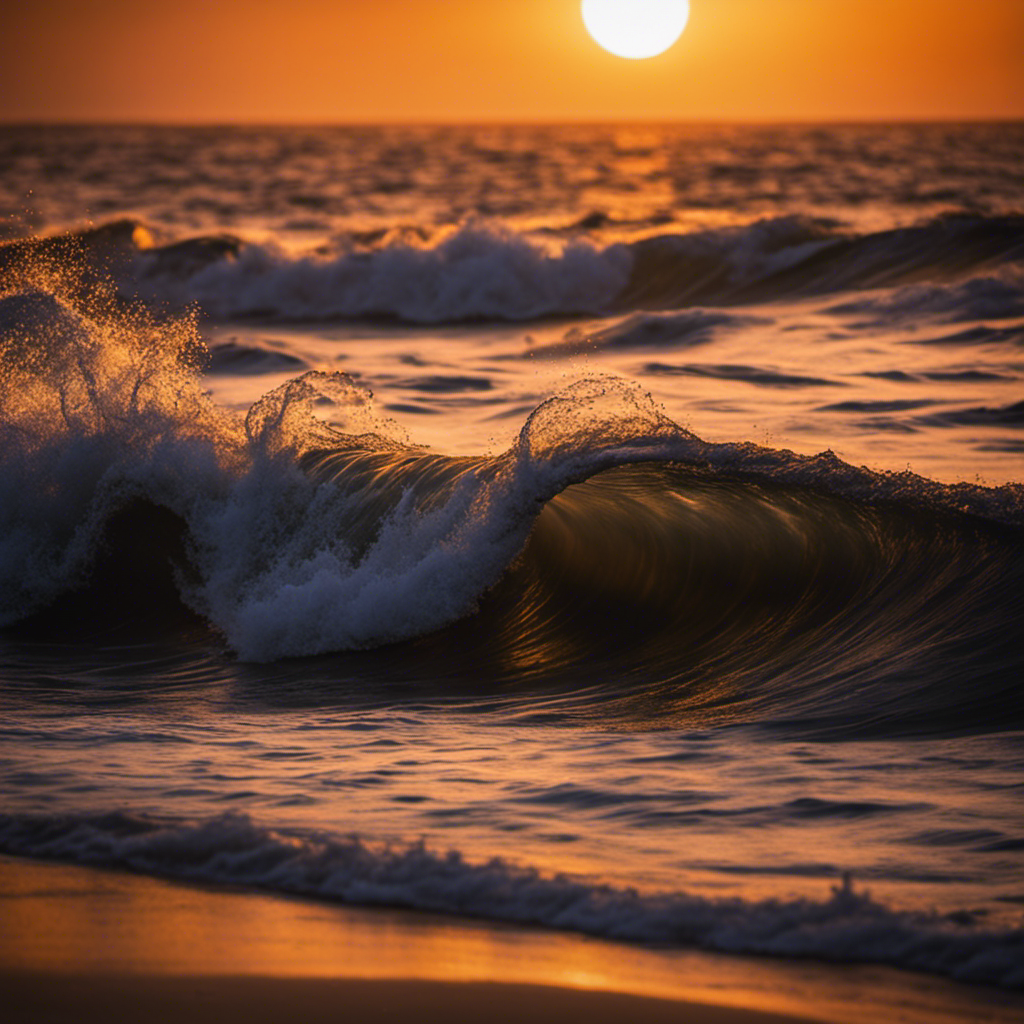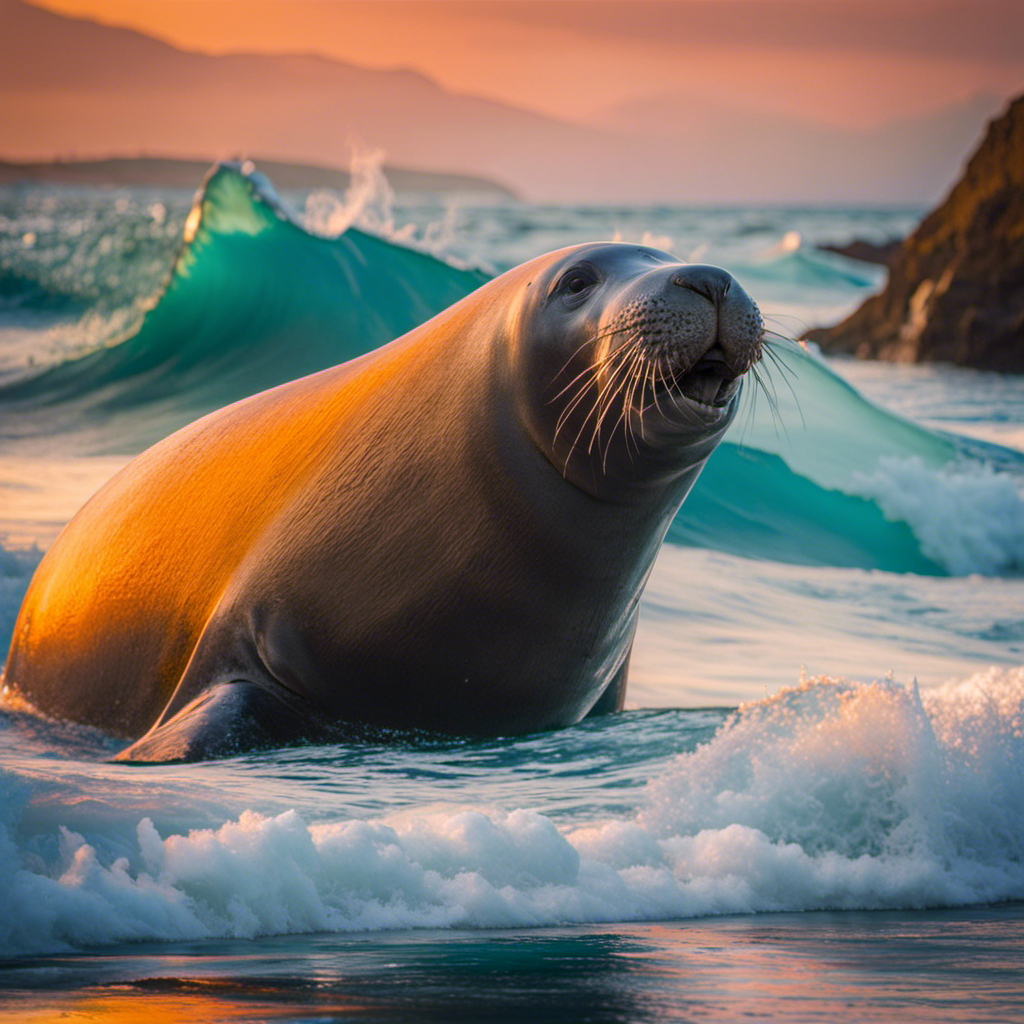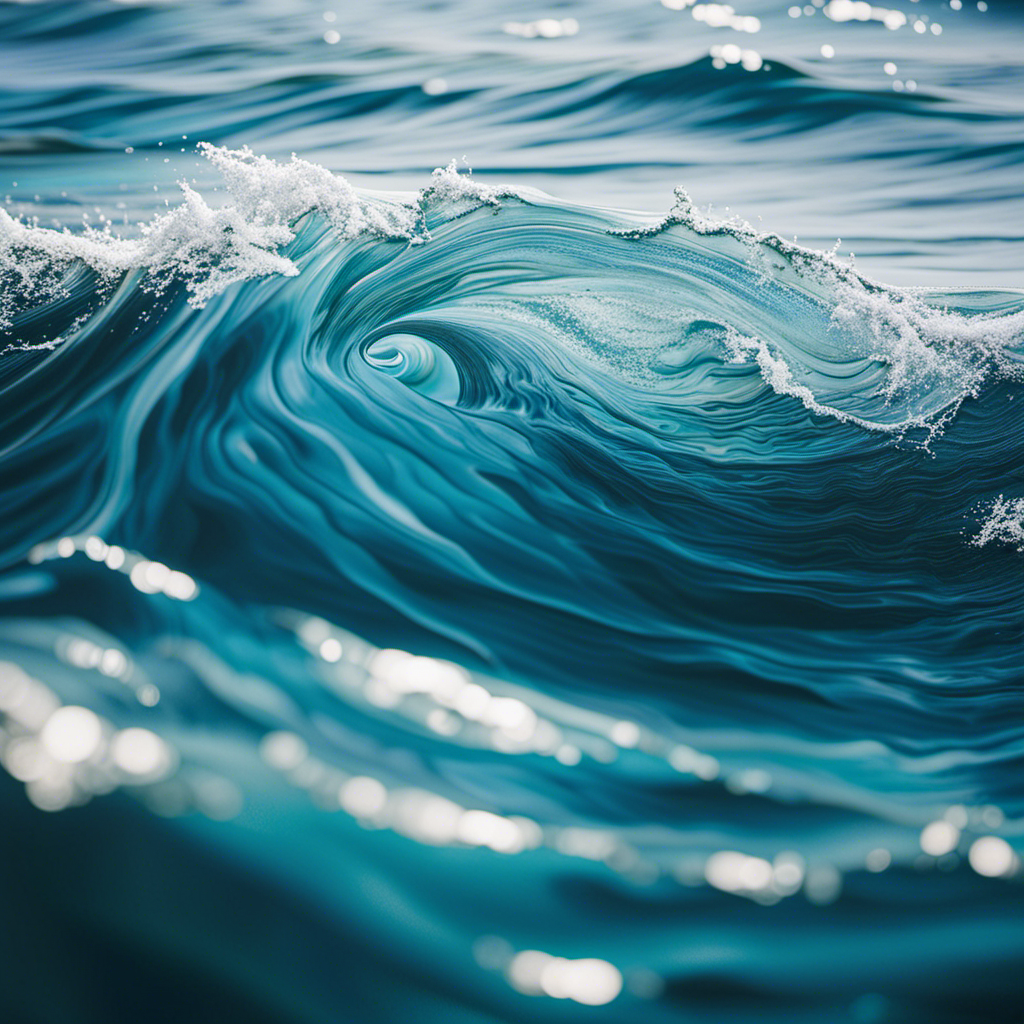Did you know that sea turtles have been swimming in our oceans for millions of years? These ancient creatures, with their impressive size and remarkable navigation abilities, are truly fascinating.
In this article, we will explore some fun facts about sea turtles, including their long-distance migrations and the unique way they determine gender.
Unfortunately, many sea turtle species are endangered, but there are ways you can help protect them.
So dive in and discover the amazing world of sea turtles!
Key Takeaways
- Sea turtles have been around for millions of years.
- There are seven distinct species of sea turtles.
- Sea turtles can reach lengths of over six feet and weigh up to 1,500 pounds.
- Female sea turtles return to the same beach where they were born to lay their eggs.
Ancient Origins and Evolutionary History
Sea turtles have been around for millions of years, evolving and adapting to their marine environments. These ancient creatures have made remarkable evolutionary adaptations to survive in the ocean’s depths.
Fossil records provide evidence of sea turtle existence dating back over 100 million years. Their long history is a testament to their resilience and ability to thrive in various ecosystems.
Now, let’s dive deeper into the fascinating world of these incredible animals and explore the seven different species of sea turtles that exist today.
Seven Different Species of Sea Turtles
There are a total of seven distinct species of turtles that inhabit the ocean. These incredible creatures have ancient origins and have been wandering the seas for millions of years.
Picture in your mind these majestic sea turtles: 1) the graceful green turtle, gliding through azure waters; 2) the massive leatherback turtle, with its immense size and weight; 3) the elegant loggerhead turtle, embarking on long distance migrations across vast oceans.
Now, let’s explore their impressive size and weight.
Impressive Size and Weight
Imagine encountering one of these incredible creatures up close and feeling the sheer weight and size of them. Sea turtles are truly impressive in their size and weight, with some reaching lengths of over six feet and weighing up to 1,500 pounds.
Their ecological impact is equally remarkable as they play a vital role in maintaining the health of marine ecosystems. Understanding their growth patterns is crucial for conserving these magnificent creatures and ensuring their continued existence.
Now, let’s delve into their remarkable navigation abilities.
Remarkable Navigation Abilities
You’ll be amazed at how sea turtles can navigate across vast distances using their remarkable internal compass and sensory abilities. Here are three remarkable navigation techniques they use:
-
Magnetic sensitivity: Sea turtles have the ability to detect the Earth’s magnetic field, allowing them to navigate accurately.
-
Sun orientation: They use the position of the sun to determine direction during both day and night.
-
Sense of smell: Sea turtles can remember smells, helping them navigate back to their nesting beaches.
Unfortunately, pollution can disrupt these abilities, affecting their navigation and leading to disorientation. Nonetheless, sea turtles continue their long-distance migrations with determination and resilience.
Long-Distance Migrations
Sea turtles are known for their impressive ability to travel long distances during their migrations. These incredible creatures have evolved adaptations that allow them to navigate vast oceanic spaces with precision. Their strong instincts and internal compass guide them through the open waters, ensuring they reach their intended destinations.
As they journey across oceans, sea turtles leave a significant impact on the environment by dispersing nutrients and contributing to healthy ecosystems.
Now, let’s explore their unique feeding habits and discover more fascinating facts about these remarkable animals.
Unique Feeding Habits
When it comes to their diet, sea turtles have a diverse range of food preferences. These magnificent creatures exhibit unique feeding patterns and employ various foraging strategies. From herbivorous green turtles munching on seagrasses to carnivorous hawksbills feasting on sponges and jellyfish, each species has its own preferred delicacies.
However, all sea turtles share one common dependence: the importance of coral reefs. These vibrant ecosystems not only provide shelter but also serve as vital feeding grounds for these graceful swimmers.
Importance of Coral Reefs to Sea Turtles
Now that you know about their unique feeding habits, let’s dive deeper into the importance of coral reefs to sea turtles.
Coral reefs are like bustling cities for marine biodiversity, providing shelter, food, and breeding grounds for various species including sea turtles.
Unfortunately, climate change is taking a toll on these fragile ecosystems. Rising temperatures and ocean acidification threaten the health of coral reefs, which in turn affects the survival of our beloved sea turtles.
Speaking of survival, did you know about their fascinating nesting behavior?
Fascinating Nesting Behavior
Did you realize that female sea turtles return to the same beach where they were born to lay their eggs? This fascinating nesting behavior showcases their strong sense of belonging and connection to their birthplace. But it’s not just about coming back home; sea turtles also have fascinating courtship rituals and meticulous nesting site selection. Take a look at this table below to learn more about these incredible creatures:
| Sea Turtle Species | Courtship Rituals |
|---|---|
| Green Turtles | Mating occurs offshore, males chase females |
| Loggerhead Turtles | Head bobbing and nuzzling before mating |
| Leatherback Turtles | Highly vocal during mating |
Now, let’s dive deeper into the challenges and threats faced by these remarkable sea turtles…
Challenges and Threats to Sea Turtles
You might be surprised to learn that pollution, habitat destruction, and climate change are some of the major challenges faced by these incredible creatures. Sea turtles face a number of threats due to human impacts on their environment. Here are some important things to consider about the challenges facing sea turtles:
- Plastic pollution in the oceans poses a significant threat to their health and safety.
- Destruction of nesting habitats reduces their ability to reproduce and thrive.
- Climate change affects the temperature of sand, influencing the sex ratio of hatchlings.
- Overfishing leads to a decrease in their food sources and disrupts their natural ecosystems.
- Light pollution near nesting beaches can disorient hatchlings, leading them away from the ocean.
Despite these challenges, conservation efforts and protection measures have been implemented worldwide.
Conservation Efforts and Protection Measures
One way to help protect these fascinating creatures is by supporting conservation organizations that work to preserve their habitats and educate communities about the importance of sea turtle conservation.
By joining these initiatives, you become part of a community dedicated to preserving the natural environment and combating marine pollution.
Together, we can ensure that sea turtles have a safe place to nest and thrive.
Now let’s explore another challenge facing these amazing creatures: sea turtles and climate change.
Sea Turtles and Climate Change
Now, let’s take a look at how climate change is impacting these incredible creatures. Sea turtle conservation efforts are crucial to protect these vulnerable species from the harmful effects of climate change.
Rising temperatures and changing ocean currents affect their nesting habitats and food sources, making it harder for them to survive. According to studies, warmer sand temperatures lead to more female hatchlings, which disrupts the gender balance.
These impacts highlight the urgent need for continued conservation measures.
Speaking of their survival, let’s explore sea turtles’ lifespan and reproduction next.
Lifespan and Reproduction
Now that you understand how climate change affects sea turtles, let’s dive into their lifespan and reproduction.
Sea turtles have an impressive lifespan, with some species living up to 100 years! These magnificent creatures reach sexual maturity between the ages of 20 and 50.
When it comes to reproduction, female sea turtles return to the same beaches where they were born to lay their eggs. But did you know that the temperature of the sand determines the gender of the hatchlings?
Gender Determination by Temperature
Did you know that the temperature of the sand influences the gender of sea turtle hatchlings? It’s amazing how such a small change can have a big impact.
Warmer temperatures produce more females, while cooler temperatures result in more males. It’s like nature has its own way of balancing things out.
Now, let’s dive into another important aspect of sea turtles – their endangered status and the need to protect these incredible creatures for future generations to enjoy.
Endangered Status of Some Sea Turtle Species
You might be surprised to learn that some species of sea turtles are facing the threat of extinction. It’s important for us to take action and protect these magnificent creatures.
Here are a few reasons why sea turtle conservation efforts are crucial:
- Sea turtles play a vital role in maintaining the health of marine ecosystems.
- Protecting endangered species ensures biodiversity and balance in nature.
By understanding the endangered status of sea turtles, we can make a difference in their survival.
Let’s explore how you can help protect these incredible creatures without delay!
How You Can Help Protect Sea Turtles
Take a moment to think about the impact you can make by supporting sea turtle conservation efforts.
By participating in beach cleanup initiatives, you can directly contribute to the protection of these magnificent creatures.
Your actions will help create a safe and clean environment for sea turtles to nest and thrive.
Every piece of trash removed from the beach is a step towards preserving their natural habitat and ensuring their survival for future generations.
Join us in making a difference today!
Frequently Asked Questions
What are some interesting facts about sea turtle nesting behavior?
Sea turtle nesting behavior is fascinating! Did you know that sea turtles return to the same beach where they were born? They dig a hole in the sand, lay their eggs, and cover them up for incubation. Amazing, right?
What are the biggest threats to sea turtles and their conservation efforts?
The biggest threats to sea turtles and their conservation efforts are illegal fishing and the lack of effective conservation strategies. These activities harm their populations and hinder efforts to protect these magnificent creatures.
How do sea turtles navigate across long distances?
Sea turtles navigate across long distances using a remarkable ability called “natal homing.” They use Earth’s magnetic field and the angle of the sun to find their way. However, artificial light can disrupt this navigation system, affecting their longevity.
What is the relationship between sea turtles and coral reefs?
Sea turtles have a unique relationship with coral reefs. They rely on the reefs for food and shelter, while also helping to maintain their health. This symbiotic relationship is crucial for biodiversity conservation and the survival of both species.
How does climate change affect sea turtles and their habitats?
Climate change impacts sea turtle nesting patterns by causing rising temperatures, which can lead to the feminization of hatchlings. This affects their ability to reproduce and threatens their population, making it crucial to address climate change for their survival and habitat preservation.
Conclusion
So, now you know some amazing facts about sea turtles!
They have a long evolutionary history and come in seven different species, each with their own unique characteristics.
From their impressive size and weight to their remarkable navigation abilities, sea turtles are truly incredible creatures.
Their long-distance migrations and gender determination by temperature add to their fascinating biology.
However, many sea turtle species are currently endangered, so it’s important that we all do our part to protect these magnificent animals.





